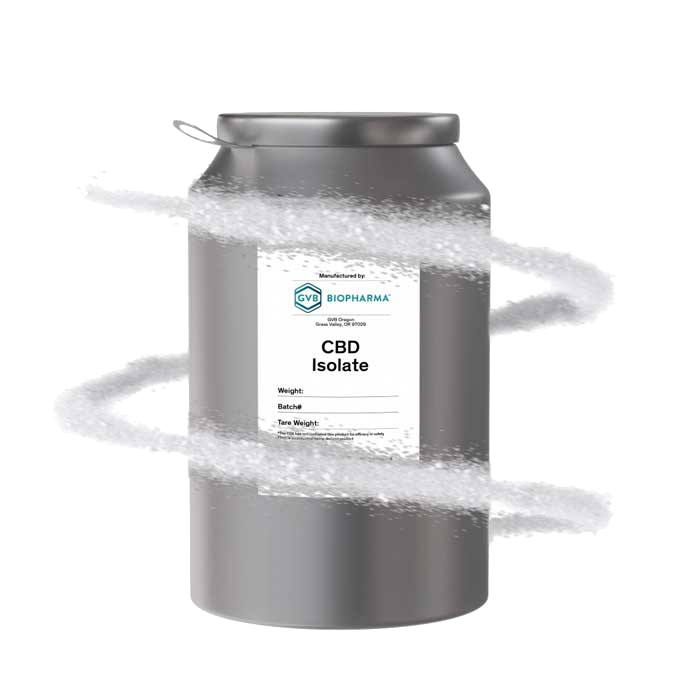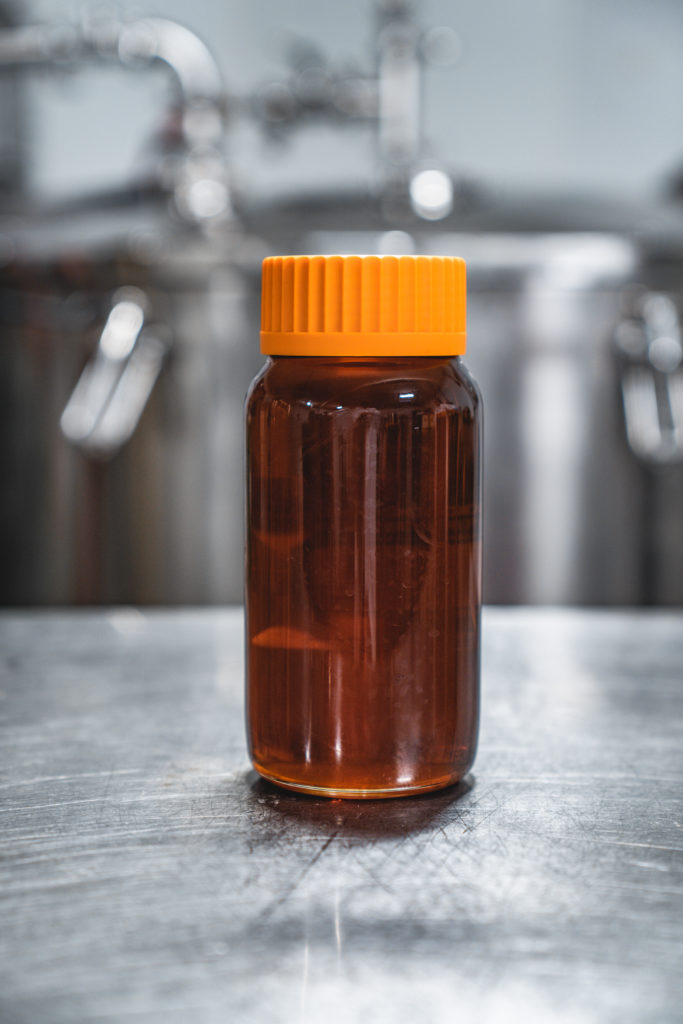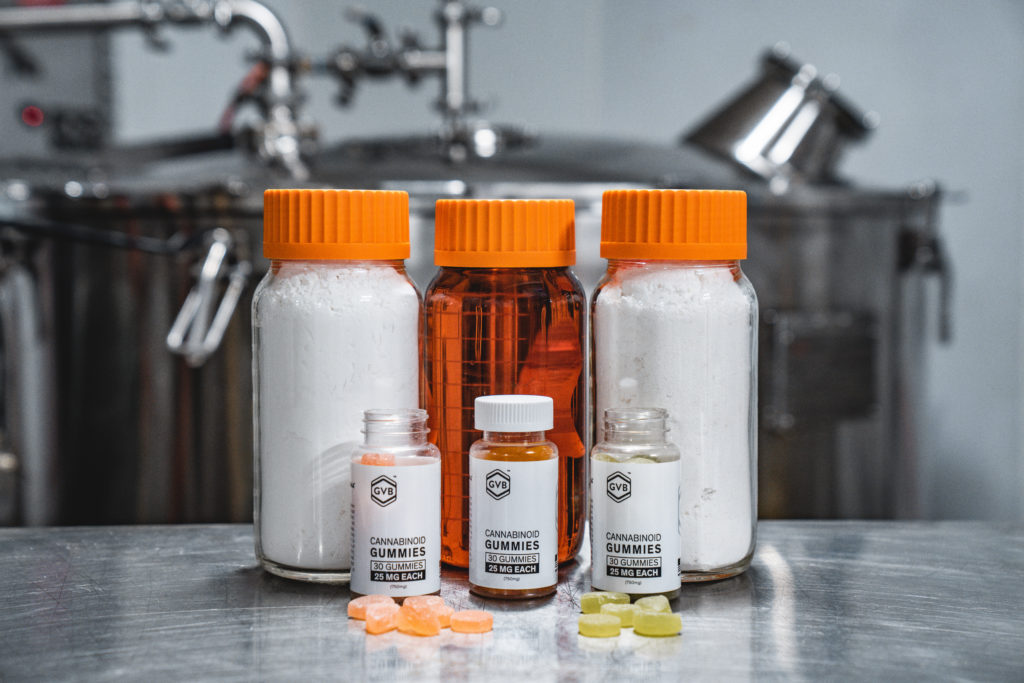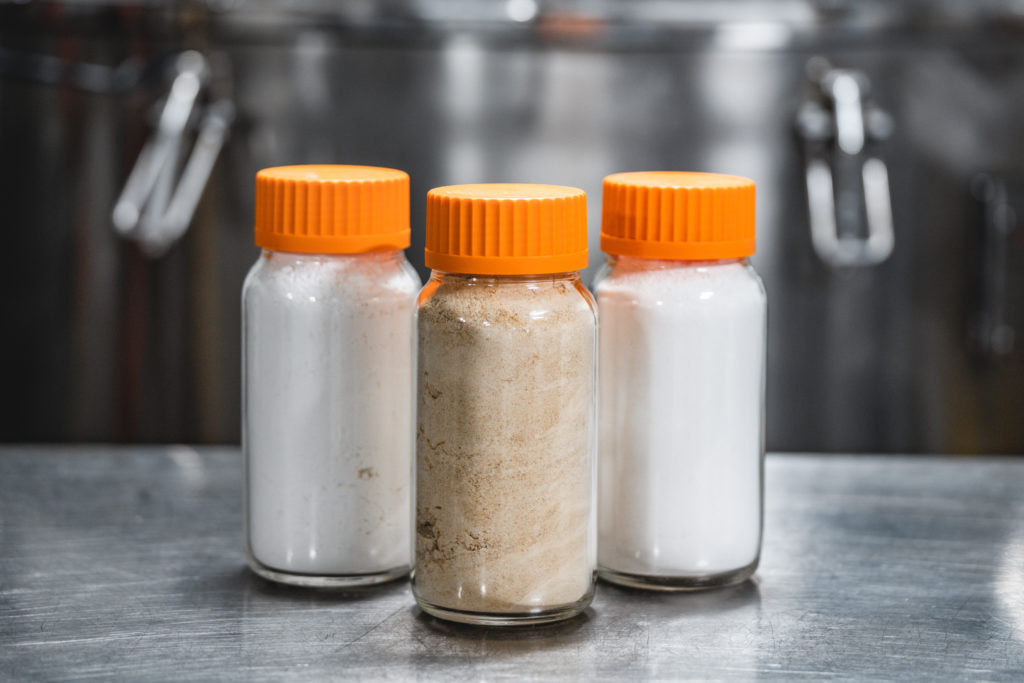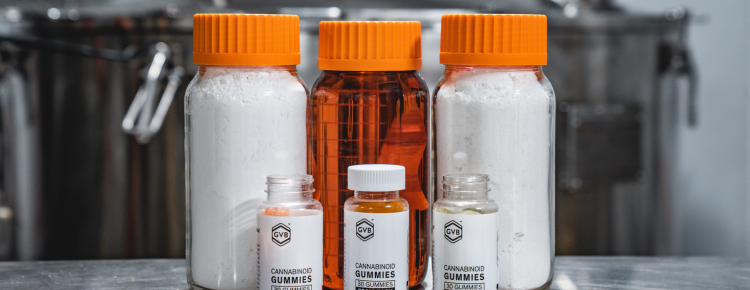Growth predictions for the global cannabis industry continue to rise. Demand pent-up for a century is about to burst, bringing the world economy along with it.
Everyone is familiar with the two major cannabinoids at play in the 21st-century cannabis industry: CBD and THC. Nothing is purely black and white, though, and when it comes to cannabis, it’s the shades of gray that are the most interesting.
Taxonomy Botany of the Cannabis sativa plant
Let’s start with the basics: an overview of the parts that make up the cannabis/hemp plant:¹
1. Roots
Thickly bunched and delicate, cannabis roots are used in traditional medicine. to treat conditions such as joint pain, fever, and infections.²
2. Stalk
Equipped with a fibrous exterior and woody pulp on the inside, the cannabis stalk is remarkably useful for textile applications.
3. Leaves
Beautiful and fan-shaped yet mainly devoid of resin, cannabis leaves are plentiful on the plant and filled with chlorophyll.
4. Flower
Emerging from the centers of the leaf clusters on female plants are resin-bearing flowers. This resin contains a variety of bioactive compounds, including flavonoids and terpenes, that are found elsewhere in the plant kingdom as well.
Unique to cannabis resin are remarkable compounds called cannabinoids. Usually exerting significant antioxidant properties, these seemingly mild substances are the ongoing subjects of intensive international research.³
Cannabinoids: an overview
Cannabinoids derive their name from the fact that these chemical compounds are only found in the Cannabis sativa plant. Many compounds found in other plants are very structurally similar to cannabinoids, but cannabis is the only natural source of CBD, THC, CBG and all the other cannabinoids so far discovered by science.
Exerting powerful bioactive properties in mammals and some other animals, certain cannabinoids cause intoxicating effects. Other cannabinoids, though, have no intoxicating effects and do not appear to have any considerable toxicity.
Major vs. minor cannabinoids
In scientific literature, an etymological distinction has arisen to signify the difference between cannabinoids that have been bred to be dominant in cannabis and cannabinoids that have not. The goal of cannabis breeding, though, is to make all cannabinoids major.
Two decades ago, the only dominant cannabinoid was THC. Then the establishment of a worldwide CBD economy caused an additional cannabinoid to rise to the fore.
A widening of the cannabis playing field
Yet another non-intoxicating cannabinoid, CBG, can now be made dominant in cannabis via selective breeding. We envision a near future in which multiple cannabinoids are all available in cannabis flower in high concentrations. It will be possible to mix and match these cannabinoids to achieve ratios targeted toward specific ailments or applications.
Top 4 minor cannabinoids
The following four cannabinoids are popular enough to have received major attention while still being new or rare enough to be considered minor cannabinoids. Let’s explore each in detail:
1. CBG
Cannabigerol (CBG) is the decarboxylated form of cannabigerolic acid, the origin substance for many major and minor cannabinoids. Most cannabinoids are derived from cannabigerolic acid in the chemical synthesis of compounds within the plant. However, a small amount of cannabigerolic acid breaks down into cannibigerol, or CBG. Non-intoxicating like CBD, CBG has a unique slew of benefits that have led to the rapid rise of a domestic CBG marketplace.
Why is CBG used?
CBG is often used alongside CBD as an additional minor cannabinoid. However, some people enjoy the experienced effects of CBG on its own, which are similar to those of CBD while remaining fully distinct.
Why is CBG important?
CBG is currently a primary target of cannabis research due to its crucial role in the cannabinoid metabolism process. 4
2. CBN
What is CBN?
Cannabinol (CBN) is a direct metabolite of THC that appears when cannabis flowers age. This cannabinoid is non-intoxicating enough to be fully distinct from THC even to a cannabis newcomer and provides unique properties that aren’t found in CBD either.
Why is CBN used?
Currently, people tend to use CBN as a sleep aid. However, research is currently being conducted that will likely provide users with a more robust understanding and use case for this highly coveted cannabinoid.
Why is CBN important?
CBN is currently only obtainable via the conversion of other cannabinoids, and there’s currently no realistic prospect of CBN-rich strains. How the industry overcomes this supply-line challenge will be a defining component of the next 10 years of cannabis history.
3. CBC
Only naturally available in cannabis in minuscule concentrations, it is nonetheless possible to convert cannabichromene (CBC) from CBG, opening up an entirely new segment of the hemp economy.
Why is CBC used?
CBC is primarily being researched for its potential pain-relieving qualities. This cannabinoid has been researched for its activity at the body’s TRPV1 receptors, which regulate inflammatory pain throughout the body.
Why is CBC important?
CBC proves there are exciting cannabinoids beyond the big four of THC, CBD, CBG, and CBN.
4. CBDa
CBDa is the original form of CBD. In cannabis buds, cannabinoids first appear in the form of carboxylic acids. Then, they undergo a process of enzymatic conversion to attain their final forms. As a carboxylic acid, CBDa becomes CBD when exposed to heat, UV light, or other oxidizing stimuli.
Why is CBDa used?
Scientists are primarily interested in CBDa because this cannabinoid precursor has been researched for its affinity at the 5-HT1a receptors, which govern neuropathic pain along with many other critical biochemical processes.5
Why is CBDa important?
CBDa shows that the carboxylic acid forms of cannabinoids can be just as used as their decarboxylated counterparts. Eventually, THCa, CBDa, and CBGa will likely be just as valued as THC, CBD, and CBG.
Why minor cannabinoids are important alone
A tendency gradually developed in the history of science to reduce every observable phenomenon to its simplest possible explanation. This philosophy of reductionist materialism led researchers to obsess over THC, excluding all other cannabis components for the last 100 years.
Every component of cannabis, though, is just as important as every other. Just because it appears to be the most psychoactive does not mean THC is any better or more useful than any other cannabinoid, terpene, or even flavonoid present in Cannabis sativa.
Why minor cannabinoids are important in hemp extract
Minor cannabinoids may make hemp extracts more effective. Therefore, hemp extracts with minor cannabinoids offer more value.
The science is still out, but there appears to be a phenomenon called the entourage effect that is triggered when all the natural components in cannabis are kept together. Brands that capitalize on this synergistic phenomenon tend to succeed.
Not so minor anymore
Once deemed minor, cannabinoids like CBN and CBG are taking on major roles in the international cannabis economy. Up-and-comers like CBC and CBDa will soon join them, and from there, a cannabis renaissance will commence.
We aren’t just seeing a few new CBD-like compounds enter the playing field. We’re witnessing a radical transformation of the very definition of cannabis — what it is, what it can do, and perhaps most importantly, what it could be.
Minor cannabinoid FAQs
What are the most important cannabinoids?
It’s hard to classify cannabinoids based on importance since each of these unique compounds offers its own special benefits. It’s true that a few cannabinoids, though, have risen to prominence recently while others remain mostly unknown.
Currently, the most popular cannabinoids — and, by extension, the most “important” — are cannabidiol (CBD), cannabigerol (CBG), and cannabinol (CBN). Rapidly reaching the same level of popularity are CBDa, CBC, and CBDv, with more than a dozen additional compounds waiting in the wings.
What are the benefits of minor cannabinoids?
Each minor cannabinoid offers its own benefits that make it uniquely desirable for some purpose or another. Researchers are looking into the potential usefulness of CBG for pain, for instance, while research into CBN for sleep is simultaneously on the rise.
When combined with CBD, minor cannabinoids offer another “hidden” benefit — the entourage effect. Researchers have observed that cannabinoids appear to become more effective when they are used together, potentially making minor cannabinoids desirable for more than just their individual benefits.
Where can I find minor cannabinoids for sale?
Companies that offer CBD in bulk quantities now also commonly offer minor cannabinoids as well. As leaders in the minor cannabinoid industry, we’d be happy to service your needs here at GVB Biopharma.
What is the difference between minor cannabinoids and terpenes?
Both minor cannabinoids and terpenes naturally occur in cannabis and hemp, so it’s easy to get them mixed up. Minor cannabinoids, though, are cannabinoids like CBD — they’re just available in lower quantities.
Terpenes, on the other hand, compose a different class of compounds altogether. These aromatic, volatile oils smell and taste wonderful, but they have different properties from cannabinoids.
Sources
1. CABI. Cannabis sativa (hemp): Datasheet.. CABI: invasive Species Compendium. Accessed January 19, 2022. Retrieved from https://www.cabi.org/isc/datasheet/14497#toidentity
2. Ryz, N. R.; Remillard, D. J.; Russo, E. B. Cannabis Roots: A Traditional Therapy with Future Potential for Treating Inflammation and Pain. Cannabis and Cannabinoid Research 2017, 21(7). https://www.ncbi.nlm.nih.gov/pmc/articles/PMC5628559/pdf/can.2017.0028.pdf
3. Grof, C. P. L. Cannabis: From Plant to Pill. British Journal of Clinical Pharmacology 2018, 84(11), 2463-2467. Retrieved from: https://pubmed.ncbi.nlm.nih.gov/29701252/
4. Harvey, D. J.; Brown, N.K. Comparative In Vitro Metabolism of the Cannabinoids. Pharmacology, Biochemistry & Behavior 1991, 40, 533-540. Retrieved from: https://static1.squarespace.com
5. Rock, E. M; Parke,L. A.The Role of 5-HT1A Receptor, and Nausea and Vomiting Relief by Cannabidiol (CBD), Cannabidiolic Acid (CBDA), and Cannabigerol (CBG). Handbook of Cannabis and Related Pathologies. Academic Press, 2017. 703-712. Retrieved from: https://static1.squarespace.com


